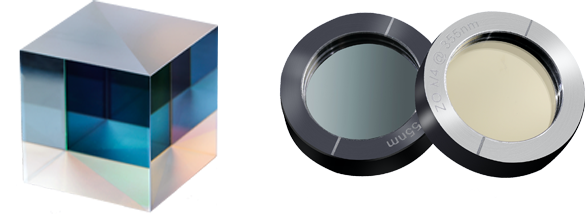

Time:2023-06-30 Source: Original Clicks:3102

Dayoptics adopts the technology of optical bonding for manufacturing ordinary polarization beam splitting cubes.
These beam splitters are optically contacted, which refers to the use of molecular gravity to achieve the adhesion between the two prisms, without the use any adhesive. This process involves applying a little pressure to make two clean, smooth, and shape-consistent optical surfaces bond together. The reduction in friction force with smoother contact surfaces applies within a certain range, but when the smoothness exceeds a certain limit, the friction force increases. This happens because the molecules on the surface of the two objects are tightly adjacent to each other. The distance between them is very small, and due to electromagnetic forces between the molecules, they attract each other. The smoother the surface, the smaller the distance between the molecules, and the greater the attraction. As a result, it becomes difficult to separate the two parts. In the case of identical materials, such as optical glass, the pieces may even join in a way that creates a single piece with no discernible internal interface.
The finished product manufactured by optical bonding exhibits exceptional strength. Separating the parts is nearly impossible. While the surface flatness maintains its high level of precision. Utilizing their unique technology, Dayoptics performs optical bonding under high temperature in an airtight, dust-free environment. The temperature is adjusted based on the materials involved, activating the molecules on the contacted surfaces, and enabling them to fully fuse. Subsequently, as the temperature changes, the molecular state stabilizes, resulting in a more compact structure of the molecules on the contacted surface, capable of withstanding temperature variations. Due to the absence of adhesive and the specialized high-temperature process, the surface of the product remains unaffected by adhesive-related issues, thereby improving the laser damage threshold. The binding surface can achieve a damage threshold of 15 J/cm² @ 1064 nm, 10 ns, 20 Hz, or even higher.
Optical bonding finds applications in High-Power PBS, High-Power Waveplates, and Micro-Optics Assemblies.